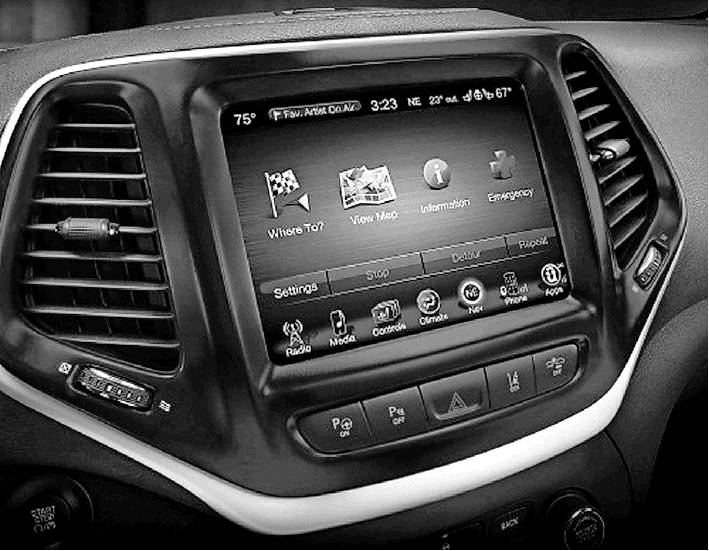OSU granted $1.9M to stop GPS hacks
Beth Burger The Columbus Dispatch | USA TODAY NETWORK
Technology company Garmin’s aviation database was jammed a week ago, leaving private pilots unable to download navigational updates or plan flights. Hackers using ransom-ware, a form of malware, were responsible for the outage.
Several years ago, a truck driver placed a jamming device on his truck so his boss wouldn’t be able to track his movements. Unbeknownst to him, as he drove near Newark Liberty International Airport he jammed the airport’s entire satellite-based tracking system.
Global Positioning Systems are vulnerable to attack. In an effort to find affordable and accessible technology to combat that, the U.S. Department of Transportation has awarded Ohio State University a $1.9 million grant to develop anti-jamming and anti-spoofing technology.
That technology exists, but it is expensive and reserved mostly for military use.
Ohio State, which will lead the project involving other universities, is seeking an affordable solution as more and more people use GPS to navigate in their cars, autonomous vehicles become more popular and drones rely more on pre-programmed destinations.
“It has to be an affordable technology. So what we are trying to find out is what technology at the moment is the best and meets the specifications,“ said Dorota A. Grejner-Brzezinska, associate dean for research at the OSU College of Engineering.
Between 80 million and 140 million automobiles have navigation systems, according to the National Highway Traffic Safety Administration. That does not include drivers using their cellphones to reach their destination.
“We do not have good standards for the resilience of the GPS receivers. GPS is the invisible utility that a lot of things run on,” said Diana Furchtgott-Roth, deputy assistant secretary for research and technology at the U.S. Department of Transportation. “People are completely unaware of it or how it needs to be protected.”
GPS is susceptible to jamming, which is when the signal is blocked from the receiver, which then causes the system to stop working. Spoofing is when you think you’re navigating toward your destination but a hacker takes you elsewhere.
“You think that you’re going to the drugstore, which is where you want to go, but really you’re heading out to the port outside town,” Furchtgott-Roth said. “It’s being spoofed. And that’s far more dangerous.”
In that case, a spoofer is “sending false signals, which pretends to be actual GPS signals, because their structure is pretty much the same,” Grejner-Brzezinska said. “Your receiver is going to receive the signal and use this for your navigation. This is actually a signal which looks like GPS, but it’s wrong.”
GPS devices initially were not targeted by hackers, just as early computers weren’t susceptible to viruses. But as technology progresses and use becomes more widespread, so do the risks. Antivirus software is now ubiquitous on computers, and GPS will likely have to follow a similar path to fight spoofing and jamming.
In the past few decades, GPS has gone from guiding munitions and troops to within 10 feet of their destination to enabling drivers using their phones to do so with much more precision.
“People are afraid of getting in an autonomous vehicle because they’re worried that it’s going to hit something or get out of control,” Furchtgott-Roth told The Dispatch. “So the resilience of the GPS navigation system is really vital to people’s confidence.”
The Ohio State grant is part of the federal Universities Transportation Centers program, which was established 1987 by Congress with the goal of advancing transportation technology and research in partnership with universities across the country. There are more than 200 centers involved in the program, and OSU is one of 41 lead institutions.
“The team at Ohio State has written extensively on positioning, navigation, timing, and resiliency. It’s conducted pioneering work in the field,” said Furchtgott-Roth. “They’ve conducted tests of interference and spoofing and developed techniques to achieve resilient, accurate and assured positioning navigation and timing in many, many difficult environments. So we were so impressed with them.”
Ohio State also was an ideal fit because of the school’s ties to the Transportation Research Center in East Liberty — the largest test facility in the country — which includes the SMART-Center, the largest autonomous vehicle proving grounds.
Ohio State won out over 12 other schools to secure the two-year project, which will be in partnership with the University of California at Irvine, the University of Texas at Austin and the University of Cincinnati. bburger@dispatch.com
@ByBethBurger
